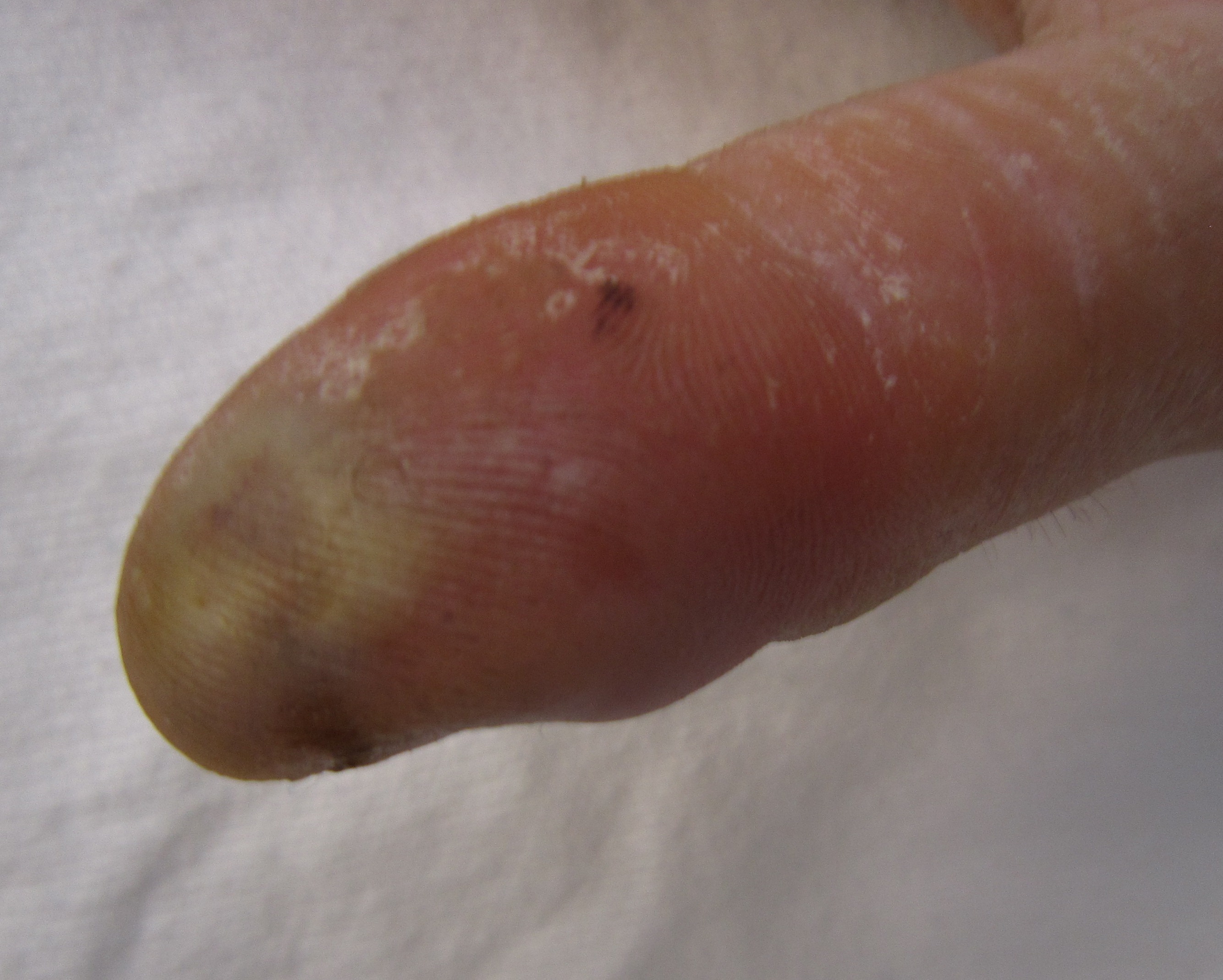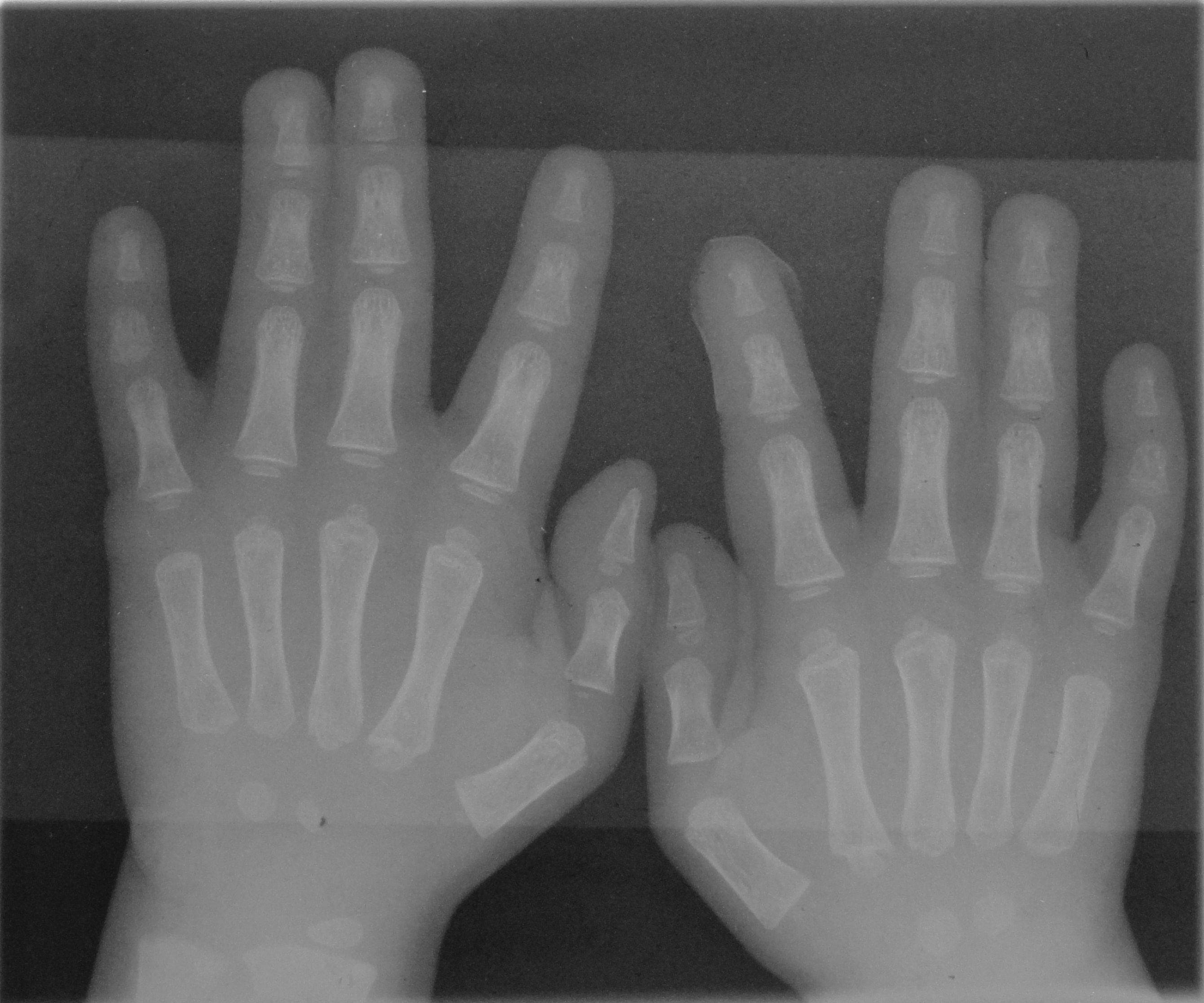|
Whitlow
A whitlow or felon is an infection of the tip of the finger A finger is a limb of the body and a type of digit, an organ of manipulation and sensation found in the hands of most of the Tetrapods, so also with humans and other primates. Most land vertebrates have five fingers (Pentadactyly). Chambers 1 .... Herpetic whitlow and melanotic whitlow (subungual melanoma) are subtypes that are not synonymous with the term ''felon''. A felon is an "extremely painful abscess on the palmar aspect of the fingertip".Dorland's Medical Dictionary: 29th Edition. Whitlow usually refers to herpetic whitlow, though it can also refer to melanotic whitlow (subungual melanoma), which somewhat resembles acral lentiginous melanoma. The terms ''whitlow'' and ''felon'' are also sometimes misapplied to paronychia, which is an infection of the tissue at the side or base of the nail. Felon presents with a throbbing pain, clinically. Notes References Occupational diseases Conditions of ... [...More Info...] [...Related Items...] OR: [Wikipedia] [Google] [Baidu] |
Herpetic Whitlow
A herpetic whitlow is a lesion (whitlow), typically on a finger or thumb, caused by the herpes simplex virus (HSV). Occasionally infection occurs on the toes or on the nail cuticle. Herpes whitlow can be caused by infection by HSV-1 or HSV-2. HSV-1 whitlow is often contracted by health care workers that come in contact with the virus; it is most commonly contracted by dental workers and medical workers exposed to oral secretions. It is also often observed in thumb-sucking children with primary HSV-1 oral infection (autoinoculation) prior to seroconversion, and in adults aged 20 to 30 following contact with HSV-2-infected genitals. Symptoms and signs Symptoms of herpetic whitlow include swelling, reddening, and tenderness of the infected part. This may be accompanied by fever and swollen lymph nodes. Small, clear vesicles initially form individually, then merge and become cloudy, unlike in bacterial whitlow when there is pus. Associated pain often seems largely relative to the phys ... [...More Info...] [...Related Items...] OR: [Wikipedia] [Google] [Baidu] |
Paronychia
Paronychia is an inflammation of the skin around the nail, which can occur suddenly, when it is usually due to the bacterium ''Staphylococcus aureus'', or gradually when it is commonly caused by the fungus ''Candida albicans''. The term is from el, παρωνυχία from ''para'' 'around', ''onyx'' 'nail', and the abstract noun suffix '' -ia''. Risk factors include repeatedly washing hands and trauma to the cuticle such as may occur from repeated nail biting or hangnails. Treatment includes antibiotics and antifungals, and if pus is present, the consideration of incision and drainage. Paronychia is commonly misapplied as a synonym for herpetic whitlow or felon. Definition and etymology Paronychia is an inflammation of the skin around the nail, which can occur suddenly (acute), when it is usually due to the bacterium ''Staphylococcus aureus'', or gradually (chronic) when it is commonly caused by ''Candida albicans''. The term is from el, παρωνυχία from ''p ... [...More Info...] [...Related Items...] OR: [Wikipedia] [Google] [Baidu] |
Infection Of The Pulp Space Of The Thumb
An infection is the invasion of tissues by pathogens, their multiplication, and the reaction of host tissues to the infectious agent and the toxins they produce. An infectious disease, also known as a transmissible disease or communicable disease, is an illness resulting from an infection. Infections can be caused by a wide range of pathogens, most prominently bacteria and viruses. Hosts can fight infections using their immune system. Mammalian hosts react to infections with an innate response, often involving inflammation, followed by an adaptive response. Specific medications used to treat infections include antibiotics, antivirals, antifungals, antiprotozoals, and antihelminthics. Infectious diseases resulted in 9.2 million deaths in 2013 (about 17% of all deaths). The branch of medicine that focuses on infections is referred to as infectious disease. Types Infections are caused by infectious agents ( pathogens) including: * Bacteria (e.g. ''Mycobacterium ... [...More Info...] [...Related Items...] OR: [Wikipedia] [Google] [Baidu] |
Infection
An infection is the invasion of tissues by pathogens, their multiplication, and the reaction of host tissues to the infectious agent and the toxins they produce. An infectious disease, also known as a transmissible disease or communicable disease, is an illness resulting from an infection. Infections can be caused by a wide range of pathogens, most prominently bacteria and viruses. Hosts can fight infections using their immune system. Mammalian hosts react to infections with an innate response, often involving inflammation, followed by an adaptive response. Specific medications used to treat infections include antibiotics, antivirals, antifungals, antiprotozoals, and antihelminthics. Infectious diseases resulted in 9.2 million deaths in 2013 (about 17% of all deaths). The branch of medicine that focuses on infections is referred to as infectious disease. Types Infections are caused by infectious agents ( pathogens) including: * Bacteria (e.g. ''Mycobacterium tube ... [...More Info...] [...Related Items...] OR: [Wikipedia] [Google] [Baidu] |
Finger
A finger is a limb of the body and a type of digit, an organ of manipulation and sensation found in the hands of most of the Tetrapods, so also with humans and other primates. Most land vertebrates have five fingers (Pentadactyly). Chambers 1998 p. 603 Oxford Illustrated pp. 311, 380 Land vertebrate fingers The five-rayed anterior limbs of terrestrial vertebrates can be derived phylogenetically from the pectoral fins of fish. Within the taxa of the terrestrial vertebrates, the basic pentadactyl plan, and thus also the fingers and phalanges, undergo many variations. Morphologically the different fingers of terrestrial vertebrates are homolog. The wings of birds and those of bats are not homologous, they are analogue flight organs. However, the phalanges within them are homologous. Chimpanzees have lower limbs that are specialized for manipulation, and (arguably) have fingers on their lower limbs as well. In the case of Primates in general, the digits of the hand a ... [...More Info...] [...Related Items...] OR: [Wikipedia] [Google] [Baidu] |
|





